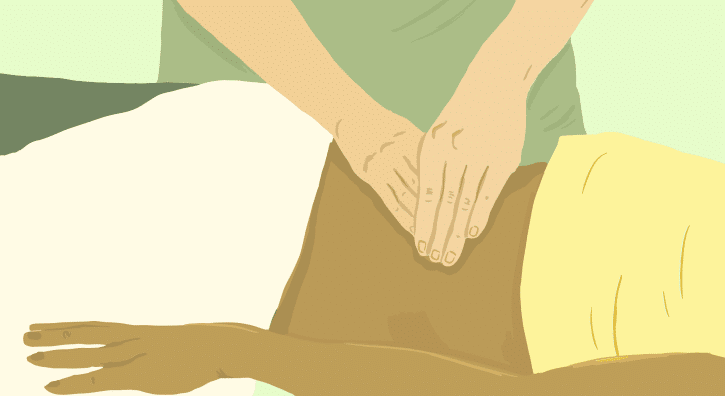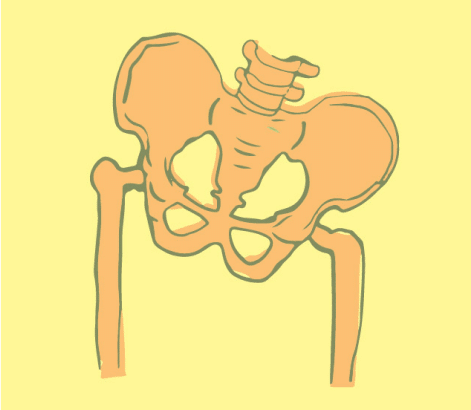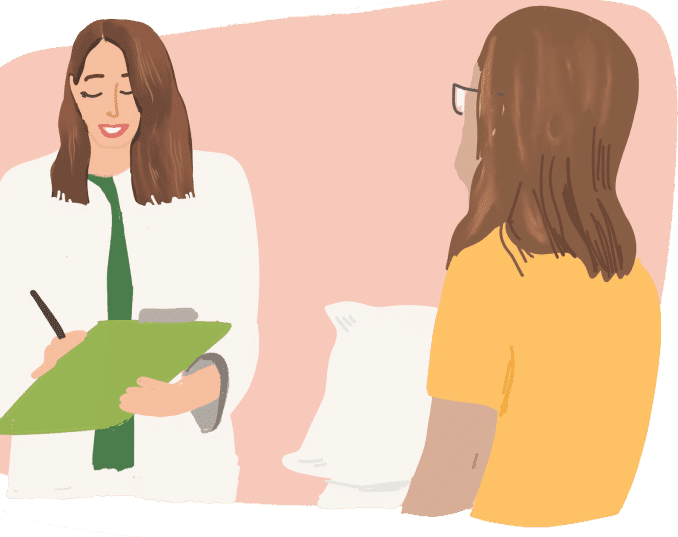

Sexual difficulties such as lack of interest, performance struggles, painful intercourse, or issues with climax can all fall under the umbrella of sexual dysfunction. Though often attributed to psychological or hormonal imbalances, many cases have a lesser-known physical component: the pelvic floor. This group of muscles supports key aspects of sexual function, from maintaining erections in men to intensifying orgasmic contractions in both sexes. Under normal circumstances, the pelvic floor enhances sexual pleasure and contributes to a satisfying experience. But when these muscles are tight, weak, or misfiring, the result can be discomfort, decreased sensitivity, or even pain during sex. Thankfully, pelvic floor physical and occupational therapy offers a pathway to healing by addressing the root of the dysfunction and helping individuals regain comfort and sexual well-being.
The Facts
- Studies suggest that about one-third of women who have not yet entered menopause will face sexual pain at some stage in their lives.
- Erectile dysfunction isn’t just a concern for older men—up to 72% of those under 40 have reported issues, depending on lifestyle and underlying health conditions.
- Around half of men aged 40 to 70 experience some degree of erectile dysfunction, with most cases falling into the mild or moderate category.
- Following prostatectomy procedures, up to 80% of male patients report that erectile function has been negatively affected.
- Embarrassment is a barrier for 60% of menopausal women, preventing them from addressing painful intercourse during doctor visits.
- Common medications such as oral birth control and treatments for skin conditions may contribute to vulvar sensitivity and dryness, complicating sexual intimacy.
- A large percentage—approximately 65%—of new mothers continue to feel pain during sex well beyond the first year after giving birth.
Sexual difficulties such as lack of interest, performance struggles, painful intercourse, or issues with climax can all fall under the umbrella of sexual dysfunction. Though often attributed to psychological or hormonal imbalances, many cases have a lesser-known physical component: the pelvic floor. This group of muscles supports key aspects of sexual function, from maintaining erections in men to intensifying orgasmic contractions in both sexes. Under normal circumstances, the pelvic floor enhances sexual pleasure and contributes to a satisfying experience. But when these muscles are tight, weak, or misfiring, the result can be discomfort, decreased sensitivity, or even pain during sex. Thankfully, pelvic floor physical and occupational therapy offers a pathway to healing by addressing the root of the dysfunction and helping individuals regain comfort and sexual well-being.
The Facts
- Studies suggest that about one-third of women who have not yet entered menopause will face sexual pain at some stage in their lives.
- Erectile dysfunction isn’t just a concern for older men—up to 72% of those under 40 have reported issues, depending on lifestyle and underlying health conditions.
- Around half of men aged 40 to 70 experience some degree of erectile dysfunction, with most cases falling into the mild or moderate category.
- Following prostatectomy procedures, up to 80% of male patients report that erectile function has been negatively affected.
- Embarrassment is a barrier for 60% of menopausal women, preventing them from addressing painful intercourse during doctor visits.
- Common medications such as oral birth control and treatments for skin conditions may contribute to vulvar sensitivity and dryness, complicating sexual intimacy.
- A large percentage—approximately 65%—of new mothers continue to feel pain during sex well beyond the first year after giving birth.
Symptoms
*Sexual Dysfunction in people with a penis
- Symptoms of erectile dysfunction often include an inability to achieve or maintain a firm erection, or difficulties with controlling ejaculation timing.
- A noticeable decrease in the strength or pressure of ejaculation may also be experienced.
- Some men report the involuntary passage of urine during orgasm—this condition is known as climacturia.
- Post-ejaculation discomfort may be felt in sensitive areas such as the penis, testicles, or between the anus and genitals.
- Skin darkening or discoloration in areas like the penis, scrotum, or surrounding tissues may also occur alongside other symptoms.
Postpartum Sexual Dysfunction
- Lower estrogen levels while nursing can lead to dryness and reduced lubrication during sex
- Pain in the perineal area caused by birth-related tearing or healing from an episiotomy
- Altered orgasmic response, including diminished intensity or inability to climax
- Leakage of urine that may occur during sexual arousal or orgasmic release
- Persistent pain during intercourse that may delay or complicate sexual re-engagement
*Sexual Dysfunction in people with vulvas/vaginas
- Vaginal dryness or inadequate lubrication, making sexual activity uncomfortable or difficult
- Pain arising during the initial entry, with deep penetration, or persisting throughout sexual contact
- Oversensitivity of the clitoris that results in pain instead of pleasure when touched
- A stinging or burning sensation that sets in post-intercourse and can linger for hours
- Reduced ability to climax or experiencing orgasms that feel less intense or satisfying
- Unintentional urination that occurs during moments of intimacy or sexual stimulation
- Urinary leakage that happens involuntarily during orgasm, commonly referred to as climacturia
Menopausal Sexual Dysfunction and Post-gynecologic cancer treatment
- Trouble producing natural lubrication due to menopause or cancer treatment–related hormone loss
- Difficulty with penetration as tissues become less elastic and more sensitive
- Pain during sexual activity or after intercourse due to thinning and fragile tissue
- Orgasmic difficulty, ranging from muted sensation to complete loss of climax
Symptoms
*Sexual Dysfunction in people with a penis
- Symptoms of erectile dysfunction often include an inability to achieve or maintain a firm erection, or difficulties with controlling ejaculation timing.
- A noticeable decrease in the strength or pressure of ejaculation may also be experienced.
- Some men report the involuntary passage of urine during orgasm—this condition is known as climacturia.
- Post-ejaculation discomfort may be felt in sensitive areas such as the penis, testicles, or between the anus and genitals.
- Skin darkening or discoloration in areas like the penis, scrotum, or surrounding tissues may also occur alongside other symptoms.
*Sexual Dysfunction in people with vulvas/vaginas
- Vaginal dryness or inadequate lubrication, making sexual activity uncomfortable or difficult
- Pain arising during the initial entry, with deep penetration, or persisting throughout sexual contact
- Oversensitivity of the clitoris that results in pain instead of pleasure when touched
- A stinging or burning sensation that sets in post-intercourse and can linger for hours
- Reduced ability to climax or experiencing orgasms that feel less intense or satisfying
- Unintentional urination that occurs during moments of intimacy or sexual stimulation
- Urinary leakage that happens involuntarily during orgasm, commonly referred to as climacturia
Postpartum Sexual Dysfunction
- Lower estrogen levels while nursing can lead to dryness and reduced lubrication during sex
- Pain in the perineal area caused by birth-related tearing or healing from an episiotomy
- Altered orgasmic response, including diminished intensity or inability to climax
- Leakage of urine that may occur during sexual arousal or orgasmic release
- Persistent pain during intercourse that may delay or complicate sexual re-engagement
Menopausal Sexual Dysfunction and Post-gynecologic cancer treatment
- Trouble producing natural lubrication due to menopause or cancer treatment–related hormone loss
- Difficulty with penetration as tissues become less elastic and more sensitive
- Pain during sexual activity or after intercourse due to thinning and fragile tissue
- Orgasmic difficulty, ranging from muted sensation to complete loss of climax
Associated Diagnoses
Diagnoses such as Endometriosis, Vulvodynia, Interstitial Cystitis/Painful Bladder Syndrome, Pudendal Neuralgia, Chronic Pelvic Pain Syndrome/Male Pelvic Pain, Lichen Sclerosus, Lichen Planus, Pelvic Floor Dysfunction, post-prostatectomy complications, and Genitourinary Syndrome of Menopause are all associated with sexual dysfunction and pelvic pain.

Associated Diagnoses
Diagnoses such as Endometriosis, Vulvodynia, Interstitial Cystitis/Painful Bladder Syndrome, Pudendal Neuralgia, Chronic Pelvic Pain Syndrome/Male Pelvic Pain, Lichen Sclerosus, Lichen Planus, Pelvic Floor Dysfunction, post-prostatectomy complications, and Genitourinary Syndrome of Menopause are all associated with sexual dysfunction and pelvic pain.


Causes of Sexual Dysfunction
- Pelvic pain syndromes associated with pelvic floor dysfunction (above)
- Childbirth
- Medications
- Obesity
- Cardiovascular disease
- Menopause
- Jelqing
- Genital mutilation, genital cutting
- Surgically-induced
- Pelvic Floor Reconstruction
- Prostatectomy
- Gender affirming surgery
- Episiotomy
- Vestibulectomy
- Pudendal Nerve Decompression
- Mesh excision
Causes of Sexual Dysfunction
- Pelvic pain syndromes associated with pelvic floor dysfunction (above)
- Childbirth
- Medications
- Obesity
- Cardiovascular disease
- Menopause
- Jelqing
- Genital mutilation, genital cutting
- Surgically-induced
- Pelvic Floor Reconstruction
- Prostatectomy
- Gender affirming surgery
- Episiotomy
- Vestibulectomy
- Pudendal Nerve Decompression
- Mesh excision

Diagnostic Challenges
There’s a growing awareness in the healthcare field that sexual health remains one of the least-discussed yet deeply important areas of patient care. Many providers feel unprepared to navigate such sensitive topics, and many patients internalize the idea that discussing sex is inappropriate or taboo. This lack of open dialogue is especially detrimental to LGBTQ+ patients, who not only deal with the stigma of sexual health discussions but also face implicit biases within clinical environments. At PHRC, we are dedicated to breaking down these barriers. We’ve built our practice around compassion, inclusivity, and evidence-based solutions for pelvic and sexual health. The truth is, sexual wellness is multifaceted—it involves the interplay of physical structures, emotional well-being, and relational dynamics. Addressing it effectively often requires a collaborative, interdisciplinary effort that brings together pelvic floor physical and occupational therapy, mental health care, and tailored medical treatments. We’re here to help patients move beyond discomfort and into empowered, informed care.
Diagnostic Challenges
There’s a growing awareness in the healthcare field that sexual health remains one of the least-discussed yet deeply important areas of patient care. Many providers feel unprepared to navigate such sensitive topics, and many patients internalize the idea that discussing sex is inappropriate or taboo. This lack of open dialogue is especially detrimental to LGBTQ+ patients, who not only deal with the stigma of sexual health discussions but also face implicit biases within clinical environments. At PHRC, we are dedicated to breaking down these barriers. We’ve built our practice around compassion, inclusivity, and evidence-based solutions for pelvic and sexual health. The truth is, sexual wellness is multifaceted—it involves the interplay of physical structures, emotional well-being, and relational dynamics. Addressing it effectively often requires a collaborative, interdisciplinary effort that brings together pelvic floor physical and occupational therapy, mental health care, and tailored medical treatments. We’re here to help patients move beyond discomfort and into empowered, informed care.
Treatment:
How We Can Help You

If you live in Encino and are experiencing sexual dysfunction, don’t wait to seek answers—especially if previous efforts haven’t resolved your symptoms. A pelvic floor physical and occupational therapist can evaluate whether the underlying issue involves your pelvic musculature, something often missed by other providers. Your initial visit will include a thorough review of your health history, current symptoms, and any treatments or medications you’ve already explored. We’ve helped many patients from Encino who came to us after feeling dismissed or confused, and we’re proud to offer a more informed, personalized approach. During the physical portion of the evaluation, we’ll assess key elements such as your pelvic muscles, nerves, connective tissues, and how your body moves as a whole. After identifying any dysfunction, your therapist will design a care plan customized to your needs—with clear short- and long-term goals. Most plans involve one to two appointments per week for about three months, plus an at-home routine to reinforce progress. We’ll also coordinate with other medical professionals involved in your case to ensure a well-rounded care plan. It’s our mission to empower individuals in Encino to move past discomfort, restore confidence, and feel at home in their bodies again.

Treatment:
How We Can Help You
If you live in Encino and are experiencing sexual dysfunction, don’t wait to seek answers—especially if previous efforts haven’t resolved your symptoms. A pelvic floor physical and occupational therapist can evaluate whether the underlying issue involves your pelvic musculature, something often missed by other providers. Your initial visit will include a thorough review of your health history, current symptoms, and any treatments or medications you’ve already explored. We’ve helped many patients from Encino who came to us after feeling dismissed or confused, and we’re proud to offer a more informed, personalized approach. During the physical portion of the evaluation, we’ll assess key elements such as your pelvic muscles, nerves, connective tissues, and how your body moves as a whole. After identifying any dysfunction, your therapist will design a care plan customized to your needs—with clear short- and long-term goals. Most plans involve one to two appointments per week for about three months, plus an at-home routine to reinforce progress. We’ll also coordinate with other medical professionals involved in your case to ensure a well-rounded care plan. It’s our mission to empower individuals in Encino to move past discomfort, restore confidence, and feel at home in their bodies again.
How Can We Help You?
Please use the form below to send us any questions or comments. You must include your e-mail address in order for us to send a response. Please be assured that all of your information will be kept confidential.

Join The Newsletter. Win a copy of our book, “Pelvic Pain Explained!”
We love getting to know our website visitors. Please tell us a little bit about yourself and get the latest info via PHRC e-newsletter!
*Subscribers automatically eligible to win our book, “Pelvic Pain Explained.”
At its heart, Pelvic Pain Explained offers a powerful reflection on the journey through chronic pelvic pain—from its mysterious onset to the complexities of diagnosis, management, and healing. It carefully explores the barriers patients face, not only in obtaining a diagnosis but in finding care that is both effective and empathetic. Clinicians, too, are portrayed with honesty, navigating their own frustrations as they try to make sense of a condition that defies easy categorization. The book doesn’t shy away from the emotional turbulence involved in trying different treatments and weighing uncertain outcomes. Most of all, it honors the deeply personal cost of living with an invisible condition—how it can shape identities, alter relationships, and leave individuals feeling isolated in their experience.


